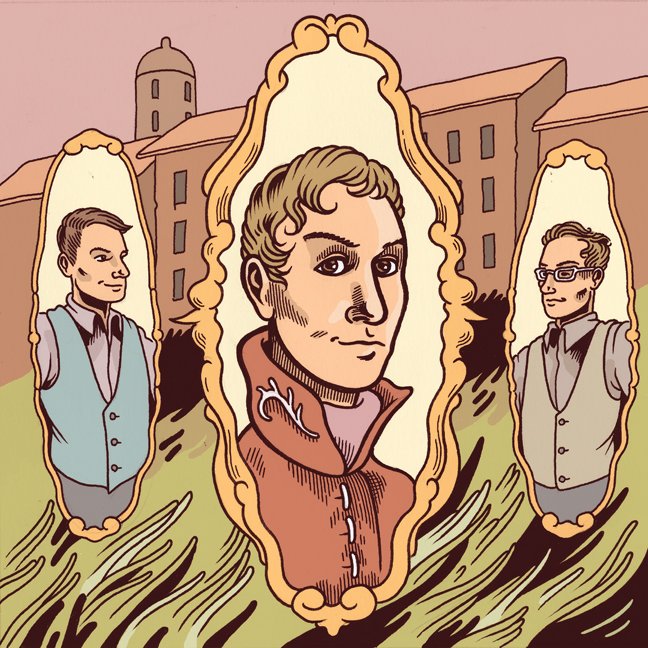There are many wonderful things about 19th-century English doctor James Barry. He had a number of pet dogs throughout his life, each named Psyche. He was a vegetarian long before the diet became popular. He always took a goat on long voyages for fresh milk. He had a life-long enmity with Florence Nightingale, the founder of modern nursing. He was an internationally acclaimed military doctor. But his achievements are often overshadowed by the fact that he was born, in about 1789, Margaret Ann Bulkley.
The Bulkleys were a formerly prosperous Irish family who had lost their wealth; Margaret Ann’s father ended up in prison, leaving his wife and child destitute. Her mother pleaded for help from her brother, painter James Barry, who did little more than refer them to influential friends, including Edward Fryer, a physician; David Steuart Erskine, the 11th Earl of Buchan; and General Francisco de Miranda, a Venezuelan revolutionary.
Sometime around the end of November 1809, 19-year-old Margaret Ann became James Stuart Miranda Barry, a name that referenced his uncle and two patrons. Barry was admitted to the University of Edinburgh’s prestigious medical school and completed his thesis on “hernia in the groin” before apprenticing in London in 1813. Shortly thereafter, he enlisted in the British Army’s medical service branch, somehow evading a routine physical examination, and was stationed in England before being posted as assistant-surgeon to the garrison in Cape Town, South Africa, in 1816.
A practitioner of preventative medicine before it was widely adopted and a fierce advocate for patient-care reform, Barry’s progressive care extended to soldiers and their families, mental asylum patients, lepers and prisoners. While in charge of prison inspection in South Africa he infuriated white wardens by asking black prisoners directly about their conditions and treatment.
Barry also had a great interest in obstetrics (the field of medicine concerned with childbirth) and gynecology. In 1826 he performed the first Caesarean section in Africa, possibly the first in the English-speaking world, where both the mother and child survived. The grateful parents named their child after him.
Despite being something of a lady’s man, tongues wagged about Barry’s bachelorhood. It’s possible that he had a physical relationship with Governor Lord Charles Somerset. In 1824 someone hung a sign on a Cape Town bridge stating, “Lord Charles [had been caught] buggering Dr Barry.” Barry was also often in the presence of a black man who was recorded officially as his “servant,” although the true nature of their relationship is hidden from history.
Barry was posted to various positions in Africa, Europe and the Caribbean throughout his career before his health began to fail sometime around 1850. He was stationed in Montreal as inspector general of hospitals in 1857, though he returned to England and was forcibly retired in 1859 because of his health. He settled into his home in London and died of “dysentery” (probably typhoid) on July 25, 1865, in his mid-70s.
After Barry’s death, Major DR McKinnon, the military clinician who issued his death certificate, was contacted by the general registrar’s office to substantiate claims that Barry had been female. McKinnon relayed a story of how housekeeper Sophia Bishop had attended to Barry’s body, then come to McKinnon claiming Barry was “a perfect female.” McKinnon probably hadn’t examined Barry, since an infectious epidemic was almost certainly the cause of death. McKinnon “informed her that it was none of my business whether Dr Barry was a male or female, and that I thought that he might be neither.” McKinnon was of the opinion his late colleague was a hermaphrodite.
“Hermaphroditism” is an obsolete term we’ve come to understand as “intersex,” someone whose genitals, gonads or hormones are ambiguous and outside the male/female dichotomy. Some historians claim Barry was a woman who took the guise of a man for a career in medicine, although the fact that he was raised female doesn’t mean he was, as sexual characteristics may not have manifested until puberty. Another possibility remains: he may have been a transgender person long before the term existed. Fortunately, no one felt the need to exhume his body, preserving his status in history as an enigmatic, eccentric, androgynous medical visionary.


 Why you can trust Xtra
Why you can trust Xtra


